- News
- Reviews
- Bikes
- Accessories
- Accessories - misc
- Computer mounts
- Bags
- Bar ends
- Bike bags & cases
- Bottle cages
- Bottles
- Cameras
- Car racks
- Child seats
- Computers
- Glasses
- GPS units
- Helmets
- Lights - front
- Lights - rear
- Lights - sets
- Locks
- Mirrors
- Mudguards
- Racks
- Pumps & CO2 inflators
- Puncture kits
- Reflectives
- Smart watches
- Stands and racks
- Trailers
- Clothing
- Components
- Bar tape & grips
- Bottom brackets
- Brake & gear cables
- Brake & STI levers
- Brake pads & spares
- Brakes
- Cassettes & freewheels
- Chains
- Chainsets & chainrings
- Derailleurs - front
- Derailleurs - rear
- Forks
- Gear levers & shifters
- Groupsets
- Handlebars & extensions
- Headsets
- Hubs
- Inner tubes
- Pedals
- Quick releases & skewers
- Saddles
- Seatposts
- Stems
- Wheels
- Tyres
- Health, fitness and nutrition
- Tools and workshop
- Miscellaneous
- Tubeless valves
- Buyers Guides
- Features
- Forum
- Recommends
- Podcast
review
£1,200.00
VERDICT:
A great bike for fanging about on or off road, with the simplicity and light weight of 1x
Weight:
10,040g
Contact:
At road.cc every product is thoroughly tested for as long as it takes to get a proper insight into how well it works. Our reviewers are experienced cyclists that we trust to be objective. While we strive to ensure that opinions expressed are backed up by facts, reviews are by their nature an informed opinion, not a definitive verdict. We don't intentionally try to break anything (except locks) but we do try to look for weak points in any design. The overall score is not just an average of the other scores: it reflects both a product's function and value – with value determined by how a product compares with items of similar spec, quality, and price.
What the road.cc scores meanGood scores are more common than bad, because fortunately good products are more common than bad.
- Exceptional
- Excellent
- Very Good
- Good
- Quite good
- Average
- Not so good
- Poor
- Bad
- Appalling
The Merida Silex 300 is a relatively low-cost entry into the world of gravel and adventure riding. Equipped with a plethora of mounts for racks and cages, able to take a 44mm 700C tyre, dropper-post-friendly and with handling designed to take on the rough stuff, it's a lot of fun off-road. Hit the tarmac with slick tyres and it fair hoofs along, too. For the money it's a great package.
- Pros: Bombproof drivetrain, lots of load-lugging options, maintenance-friendly, great handling
- Cons: Very upright position won't appeal to all, Spyre cable discs asking for an upgrade, press-fit BB creaking
The Silex 300 sits one up from the bottom of Merida's Silex range and is its cheapest 1x bike, with the options either side both being Shimano 2x drivetrains. You need to spend another £500 to get 1x (still Apex) with hydro brakes – quite a jump. Earlier, Stu really liked the carbon Silex 9000 and Jim gave the alloy-framed Ultegra 700 9/10. Both are discontinued for 2019, replaced by lower-spec models that retain the Silex signature frame, which is really the talking point here. First, though, how does it ride?
> Find your nearest dealer here
After swapping out the 35mm Maxxis tyres for 38mm Compass Steilacoombs, the bike went from sketchy and unpredictable off tarmac to surefooted, safe at speed and confidence-inspiring through technical stuff.
Shifting was as sure as SRAM Apex 1x always is – up, down, in rough or smooth, under load or easy, it just worked without grumble or hunting for a gear, and needed no adjustment over several months of riding. The roller clutch did its magic, with not a single decibel of chainslap apparent even in the smallest sprocket, bombing gravel roads at maximum speed. The ability to lock the jockey wheel cage open for rear wheel removal makes wheel swaps a faff-free breeze, as it gets the mech totally out of the way from the cassette, meaning you can focus on aligning the rotor with the calliper.
Yes, it's a very upright riding position – I would normally have another 40mm of stem ahead of me, putting the front axle halfway along the stem instead of out beyond the faceplate when looking down. The mildly flared compact bar also affects this, with the point where you attach the hoods being only about 60mm out from the centre of the bar in the stem clamp – about 30mm shorter than my usual bars. After an hour or so of trying to be aero with a bar closer than normal, my triceps gave up the ghost, so I sat back and enjoyed the ride instead.
I could have possibly gone to an XL frame with my 6ft height and stupidly long arms, but the Large did very well. Stack and reach figures (687mm and 498mm as I make them, BB centre to handlebar centre) with stem slammed were both within 10mm of my go-to disc bike, a Merida Ride 5000 Disc also in Large. There's 25mm of spacers to play with should you want a bit more handlebar height.
The slightly steeper 74-degree seat tube angle on the Silex adds 14mm of forwardness compared with my Ride 5000, meaning between the two bikes and notwithstanding the handlebar reach to the hoods, they're pretty much the same. But the two degrees off the head tube definitely makes for a more forgiving, less twitchy ride on the Silex.
I spent most of the review period exploring a new area of forestry, highland estate and windfarm criss-crossed with long gravel roads – with a 30-minute stretch on tarmac and estate roads to get there. Across this varied terrain, including trail-free mossy forest firebreaks, rooty descents and leaf-strewn riverside trails, the Silex 300 never skipped a beat.
Riding several miles of newly made estate road, then a few more of knee-deep heather and deer tracks, I thought that with wider tyres this would be even easier. With a 44T chainring and 11-42 cassette, the lowest 44x42 gear suited the toughest of climbs, an 8% ascent of 500m passing without note except for a few really steep pitches where the long head tube and slammed-backwards saddle warranted leaning forwards out of the saddle to keep the front wheel down.
And with 44x11 at the fast end I never wanted for higher gears – at 90rpm you're doing 47kph and serious wind resistance is piling up, so just tuck in and enjoy.
In twisty singletrack the Silex did well, with the short chainstays getting round tight corners; you could certainly race cyclo-cross on it with no hassle and likely do quite well, limited shoulder room for running with the bike notwithstanding. Yes, the front end isn't as agile as an out-and-out race machine, but there needs to be a balance.
Spending more than a few hours on frost-hardened snow run-through with properly-frozen vehicle tracks, the Silex 300 didn't kill me, not even once. That predictable handling really does make for a fun bike to ride through sketchy stuff.
The frame
When I shared first photos of the Silex 300, comments ranged from 'Is it made of spare tubes left over from other bikes?' to 'Could've just got a mountain bike'. Hardly surprising, as Merida took inspiration from the long top tube/short stem mountain bike world for the Silex range.
I'll spare you the number-word soup that most geometry discussions descend into, suffice to say that it just works. Overall, I was able to get the saddle-nose-to-handlebar distance the same as my other bikes, but the shorter stem made for quicker handling off-road in the filth that the Silex beckons you to take on.
Short, almost cyclo-cross-length chainstays help with nippy handling in amongst trees, and the slacker-than-roadie head tube and commensurate longish wheelbase keep things stable at speed on fast gravel blasts. The sloping top tube meant I had a decent 200mm of exposed seatpost to aid comfort.
That head tube is a standout love it/hate it feature mind – at 220mm on the Large test frame it's a whopper, a good 50mm longer than that on my racy bike. But a gravelly-adventure bike is all about taking in the views, not out-and-out aero speed requiring the flexibility of a cat. You get three spacers – 10, 9 and 6mm – adding up to 25mm-worth of stem adjustment.
You get threaded mudguard mounts in the fork crown and both dropouts, downwards-facing in the case of the fork. There's a threaded rear mudguard boss in the chainstay bridge, and an unthreaded 5mm hole in the seatstay bridge.
The fork has low-rider/cage side bosses, and rounding out storage the frame has three sets of bottle bosses set fairly low to aid framebag clearance and handling. There's a double clamp cut in the seat tube, at either side so as to be out of the way of tyre spray – nice touch.
The seat tube is a dropper-post-friendly 30.9mm, but while you could enter the top tube via the redundant front mech cable port, there's no obvious provision for internally-routing the cable at the BB – a real miss on a 1x bike where a dropper could be connected to a traditional left-hand shifter. Where the cables exit the down tube it looks like there could be a way to route an internal dropper post above the BB once removed, but I didn't try this.
Merida has gone with a BB-86 press-fit bottom bracket, to which I will rail, 'WHY?' Maintenance-wise the Silex is sorted, with its internally routed down tube opening at the BB shell for ease of cabling – the very best of both worlds. But a press-fit BB? Surely threaded external bearings make more sense, especially for affordable bikes designed for a good thrashing in the muck. All was good for a few months, then a persistent creak emerged definitely related to the BB. Were it my bike I'd be reaching for the Loctite 609, or asking the seller to; this sort of thing should not be an issue in 2019.
The BB shell itself is drilled for a front mech cable guide and there's an indent in the seat tube for a front mech, should you wish to go double.
Spec and finishing kit
The original Maxxis Razzo tyres were the first things to go. At 35mm they are clearly well under-rated for what the Silex is capable of when properly shod, and while fine rolling on tarmac, lean into a hard corner and the shoulder tread would start to squirm – beware at speed.
After a few initial blasts to get to grips – or lack thereof off-road – I swapped them out for the Most Excellent Compass Steilacoom 38mm rubber.
The Merida Comp 17mm rims are functional if a bit weighty paired with the VP hubs, and set up tubeless with a single layer of tape and valve. Inflating the Compass tyres was hassle-free, pointing to a well-dimensioned rim bed. And – joy – both wheels are 12mm thru-axles, meaning you can run a spare set of wheels with slicks, and swap them out in seconds. This axle design is one of the best I've seen yet, where you just screw in until tight, then pull the spring-loaded lever out off a splined shaft and position at your preferred angle.
The TRP Spyre mechanical disc brakes are functional enough, and during the review period – including some fairly hairy fast descending at the edge of the Steilacooms' traction – I never felt I needed to go into the drops for more braking power. Use the drops for faster, more aero handling, yes, but two fingers off the hoods was enough to haul me up sharpish.
That said, on longer descents I felt a bit of hand fatigue, so you may want to look at an upgrade to the excellent TRP Hy/Rd callipers at some stage.
The single-run Jagwire cables are sealed with a rubber boot, to give some protection and longevity to the cable outer. Both the brake and shift cables are held under the stays by cable-ties – a perfectly good solution and very home-mechanic-friendly.
The finishing kit is all Merida's own Comp line. Unusually for a gravel/adventure-orientated bike, Merida has specced the very mildly flared bar, measuring 440mm at the drops and 400 at the hoods. It sweeps back ever so slightly and is broad across the tops, to aid grip and wrist comfort when hammering over corrugations. Bar tape is nice and thick, and plenty grippy.
Value and conclusion
Overall, the Silex 300 is a great package. The foibles of lack of dropper post routing and threaded BB are liveable-with, albeit frustrating given how easily they could be added at time of manufacture. The ability to fit fat tyres and swap wheels quickly makes for a jack-of-all-trades approach, and adding racks/bags/cages opens up new horizons.
You need to spend an extra £500 to get the same Apex 1x with hydro brakes on the Silex 600, which shares the same frame, fork and many other components. I find this price odd as the difference at RRP between Apex 1x11 hydro and mechanical is about £100, and there's less than 200g between the bikes even with a nicer-but-still average wheelset on the 600. My move would be to buy the 300, sell the Spyres new, find a pair of TRP Hy/Rds on eBay new for around £100 and enjoy a significantly improved stopping experience, with the ability to replace brake cables easily each year. Or, strip the mechanical levers/callipers at new, bung them on eBay and find someone selling a set of Apex 11-speed hydro levers/brakes – likely around £200 used.
> Buyer's Guide: 13 of the best 2018 & 2019 £1,000 to £1,500 road bikes
As for other brands, a logical comparison would be the Whyte Glencoe that Dave really liked, a £1,300 alloy-frame-and-forked adventure bike also packing Apex 1x11, but managing to get TRP Hy/Rd hydraulic callipers into the parts mix, and flat mounts too should you want to go full-Apex hydro in future. The Glencoe comes with 650B wheels and 12mm thru-axles from the outset, and – joy! – a BSA external bottom bracket. At 11.2kg there's a bit more pork in there someplace, 350g in extra 650B rubber for sure, 100g extra in the brakes and the rest probably in the alloy fork. The Glencoe doesn't get fork cage mounts, mind, but it looks a close run thing between the two bikes; everything Dave liked about the Glencoe's handling, I can see in the Silex 300.
They may look odd, and take a bit of getting used to, and suffer a few odd spec decisions, but all in all I welcome our new affordable long top tube/short stem mixed-surface masters.
Verdict
A great bike for fanging about on or off road, with the simplicity and light weight of 1x
road.cc test report
Make and model: Merida Silex 300
Size tested: Large
About the bike
List the components used to build up the bike.
FRAME SILEX LITE
FRAME SIZE XS, S, M, L, XL
COLOR MATT-OLIVE (RED)
FORK MERIDA SILEX CF2
BRAKE FRONT Tektro Spyre
BRAKE REAR Tektro Spyre
BRAKE LEVER Sram Apex 1
HEADSET MERIDA M2331
HANDLEBAR MERIDA Expert GR
HANDLEBAR STEM MERIDA Expert CC
GRIP MERIDA Road Expert
DERAILLEUR REAR Sram Apex1
SHIFTER FRONT no
SHIFTER REAR Sram Apex 1
SEAT POST MERIDA Comp CC
SEAT CLAMP MERIDA Expert
SADDLE MERIDA Comp CC
CHAIN KMC X11-1
CHAINWHEEL FSA Gossamer
FREEWHEEL Sunrace CSMS8
BOTTOM BRAKET FSA PF86 MegaExo
RIM MERIDA Comp SL
TIRE FRONT Maxxis Razzo
TIRE REAR Maxxis Razzo
HUB FRONT VP 173SB
HUB REAR VP 273SB
AXLE FRONT MERIDA QR48N 12-100
AXLE REAR MERIDA QR48 12-142
ROTOR FRONT Tektro M160
ROTOR REAR Tektro M160
SPOKES Black stainless
Tell us what the bike is for and who it's aimed at. What do the manufacturers say about it? How does that compare to your own feelings about the bike?
It's for someone wanting an adventure-gravel bike that can do road duty when needed.
Where does this model sit in the range? Tell us briefly about the cheaper options and the more expensive options
It's one from the bottom, above the Silex 200 (Shimano Sora 2X) and £300 cheaper than the Silex 400 (105 2X, hydro brakes).
Frame and fork
Overall rating for frame and fork
8/10
Tell us about the build quality and finish of the frame and fork?
Chunky welds aside, great build.
Tell us about the materials used in the frame and fork?
The frame is 6066 Aluminium and the fork is carbon.
Tell us about the geometry of the frame and fork?
The front end is very tall, and at 71 degrees the slack head tube makes for stable steering at speed. The short chainstays aid quick cornering around obstacles, while the long wheelbase is gravel-fast-friendly. The sloping top tube gives plenty of standover clearance and seatpost flex.
How was the bike in terms of height and reach? How did it compare to other bikes of the same stated size?
Reach of 498mm and stack of 687, with the stem slammed. About the same as my endurance road bike, a Large 2014 Merida Ride 500 Disc.
Riding the bike
Was the bike comfortable to ride? Tell us how you felt about the ride quality.
With all that seatpost showing and fat tyres, yes definitely comfortable.
Did the bike feel stiff in the right places? Did any part of the bike feel too stiff or too flexible?
Everything felt just right.
How did the bike transfer power? Did it feel efficient?
Yes - stomp on the pedals and you're instantly rewarded.
Was there any toe-clip overlap with the front wheel? If so was it a problem?
No, the slack head tube and long wheelbase mean even the largest feet should be OK.
How would you describe the steering? Was it lively neutral or unresponsive? Neutral, certainly. No surprises, but able to be chucked about when needed.
Tell us some more about the handling. How did the bike feel overall? Did it do particular things well or badly?
Felt well balanced, stable and safe, descending either off-road roughness or fast gravel.
Which components had the most effect (good or bad) on the bike's comfort? would you recommend any changes?
The wide bar tops were good, as was the long seatpost. One thing it definitely needs is better tyres, though – go fat and tubeless!
Which components had the most effect (good or bad) on the bike's stiffness? would you recommend any changes?
Such a short stem is plenty stiff, no point in upgrading there. I couldn't feel anything loose from the wheels either.
Which components had the most effect (good or bad) on the bike's efficiency? would you recommend any changes?
Again, tyres. The drivetrain's sweet.
Rate the bike for efficiency of power transfer:
10/10
It jumps you forward with urgency.
Rate the bike for acceleration:
10/10
With the efficient power transfer, acceleration is entirely down to your legs.
Rate the bike for sprinting:
8/10
The slacker handling means changes of direction in a hurry might be limited.
Rate the bike for high speed stability:
9/10
Really good – not sketchy at all, even on gravel.
Rate the bike for cruising speed stability:
9/10
The wheelbase and slack steering angle means a stable ride.
Rate the bike for low speed stability:
9/10
Again, no complaints.
Rate the bike for flat cornering:
8/10
Can't detect anything likely to cause upset.
Rate the bike for cornering on descents:
6/10
With the fairly upright position you don't really feel 'in' the bike for fast swooping corners.
Rate the bike for climbing:
8/10
Climbs well; on really steep bits you may be out of the saddle more often to keep traction on the front.
The drivetrain
Rate the drivetrain for performance:
10/10
Can't fault it – from the off it shifted crisply and without fault.
Rate the drivetrain for durability:
8/10
It's SRAM Apex – no reason to think it won't last ages.
Rate the drivetrain for weight:
8/10
With 1x it's defo lighter than 2x.
Rate the drivetrain for value:
8/10
Some savings made using the FSA chainset and Sunrace cassette, but I doubt you'd notice the difference with full SRAM.
Tell us some more about the drivetrain. Anything you particularly did or didn't like? Any components which didn't work well together?
Everything worked together nicely, except for the bottom bracket – that started creaking reliably in very cold weather, after a few months worth of riding.
Wheels and tyres
Rate the wheels for performance:
7/10
Not light, but did the job and no noticeable flex on rough terrain.
Rate the wheels for durability:
8/10
Still spinning and true.
Rate the wheels for weight:
6/10
Probably one place to knock a few hundred grams off if you're feeling that way inclined.
Rate the wheels for comfort:
8/10
With such fat tyres on I don't think the wheels need to do much.
Rate the wheels for value:
7/10
More workhorse than thoroughbred.
Tell us some more about the wheels.Did they work well in the conditions you encountered? Would you change the wheels? If so what for?
Can't fault them, though I might opt for something lighter, maybe 650B.
Rate the tyres for performance:
5/10
Good in the dry, on gravel, but don't bother in the wet, or leaves, or mud/silt...
Rate the tyres for durability:
7/10
Only used briefly.
Rate the tyres for weight:
7/10
Rate the tyres for comfort:
7/10
Tell us some more about the tyres. Did they work well in the conditions you encountered? Would you change the tyres? If so what for?
In a Scottish winter, not ideal at all. I'd say they're a summer tyre for non-muddy use.
Controls
Rate the controls for performance:
10/10
Can't fault them.
Rate the controls for durability:
9/10
Rate the controls for comfort:
8/10
They felt OK, different to my typical Ultegra but not an issue.
Rate the controls for value:
8/10
Tell us some more about the controls. Any particularly good or bad components? How would the controls work for larger or smaller riders?
Apex levers offer both shift paddle and lever reach adjustment, to get both closer to the drops for smaller hands.
Anything else you want to say about the componentry? Comment on any other components (good or bad)
The Spyre C brakes worked well enough, but I'd suggest an upgrade to TRP Hy/Rds when you can.
Your summary
Did you enjoy riding the bike? Yes
Would you consider buying the bike? Yes
Would you recommend the bike to a friend? Yes
How does the price compare to that of similar bikes in the market, including ones recently tested on road.cc?
It's both lighter by 800g and cheaper by £100 than the Vitus Substance V2, but lacks hydro brakes. Likewise the Pinnacle Arkose 3 gets hydro, while opting for a 2x Shimano 105 groupset at £50 more. Merida wants an extra £500 for the Silex 600, adding hydro brakes and better wheels. For my money a set of TRP Hy/Rds is the upgrade to go for. The Sonder Camino AL at £950 gets the hydro Apex brakes and saves you £250, but overall the quality is lower, with external cables, cheaper finishing kit and no thru-axles.
Rate the bike overall for performance:
9/10
Rate the bike overall for value:
8/10
Use this box to explain your overall score
Overall, the Silex 300 is very good. If a few issues were sorted – the press-fit BB that started creaking after a few months, lack of dropper cable routing, narrow bar, and average brakes – it'd be 4.5/5. And if it were a hundred quid or so cheaper it'd be 5 stars, as it would if it had the SRAM Apex hydro brakes – a £100 uplift looking at RRP between mechanical and hydro.
About the tester
Age: 45
I usually ride: Merida Ride 5000 Disc My best bike is: Velocite Selene
I've been riding for: Over 20 years I ride: A few times a week I would class myself as: Expert
I regularly do the following types of riding: cyclo-cross, club rides, general fitness riding, mountain biking, Dutch bike pootling
Living in the Highlands, Mike is constantly finding innovative and usually cold/wet ways to accelerate the degradation of cycling kit. At his happiest in a warm workshop holding an anodised tool of high repute, Mike's been taking bikes apart and (mostly) putting them back together for forty years. With a day job in global IT (he's not completely sure what that means either) and having run a boutique cycle service business on the side for a decade, bikes are his escape into the practical and life-changing for his customers.
Latest Comments
- ragtag 29 sec ago
They obviously didn't satisfy the criteria.
- IanGlasgow 42 min 54 sec ago
40 pedestrians a year are killed by drivers on pavements in the UK. The solution is simple - remove all the pavements!
- Simon E 1 hour 57 min ago
So should everyone who owns a smartphone therefore be expected to buy bikes, cars and everything else they want or need from China?...
- Rendel Harris 3 hours 34 min ago
Very unpopular, I am informed by someone on the inside; the majority of staff would love to have their own column and seeing someone getting well...
- Freddy56 12 hours 33 min ago
I have a 10 year old set of shamals and a 20 TWENTY! year old set of Zondas still going strong.
- Freddy56 12 hours 34 min ago
I have these in the photochromic option for winter and they are light and fast acting. Happy with the purchase.
- ChrisA 15 hours 17 min ago
You want solar panels? Yours for €1659. https://widepathcamper.com/spare-part/428629/solar-cell-kit-complete-wit...
- Beachboy 15 hours 55 min ago
If you want to see a real demonstration, albeit on social media from kick ball fans, tell them you are keeping the trees but making the road a...





































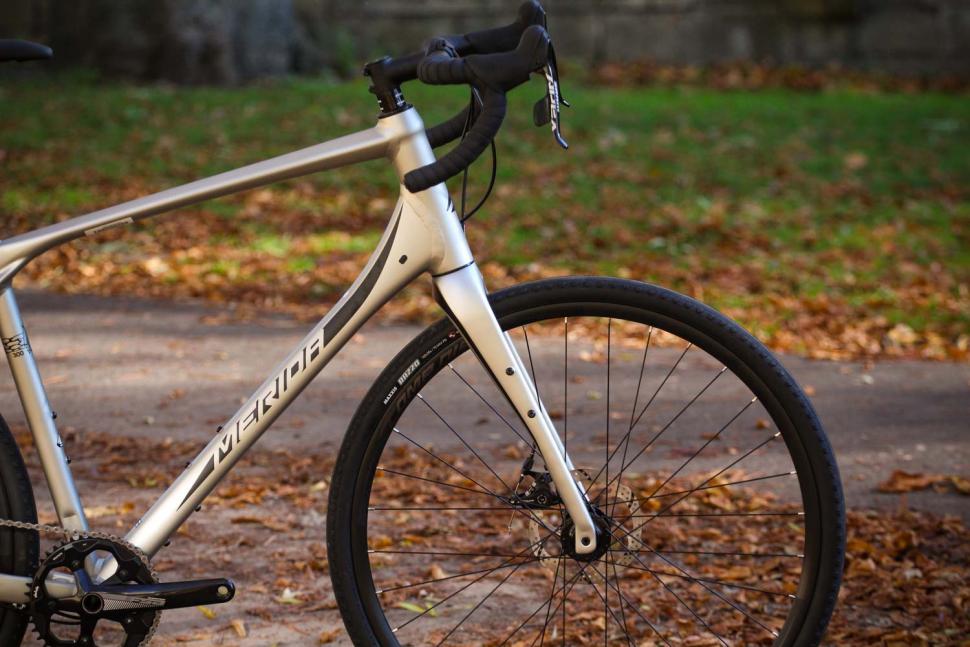




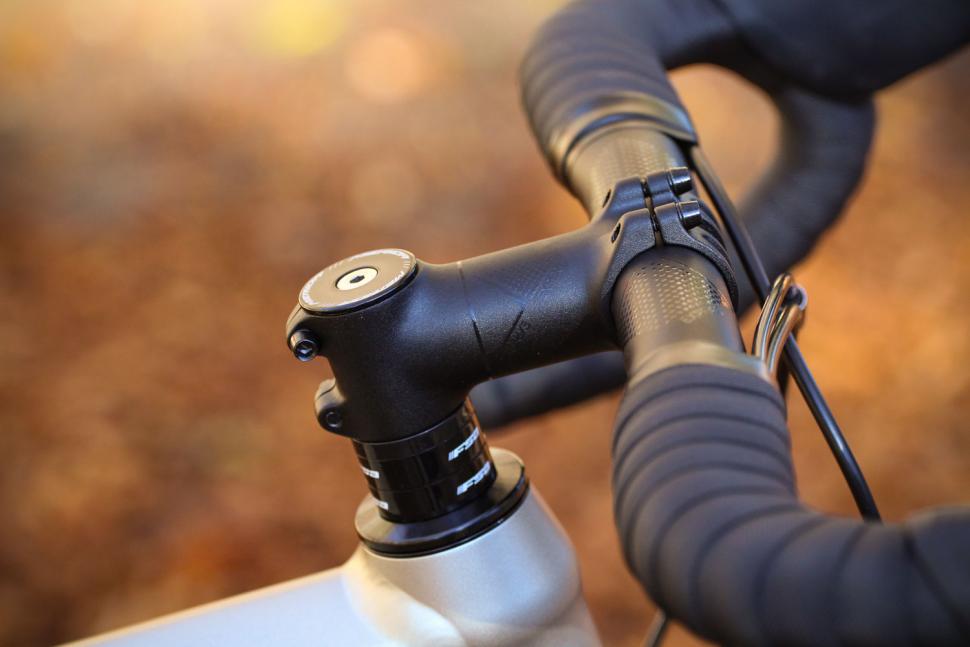

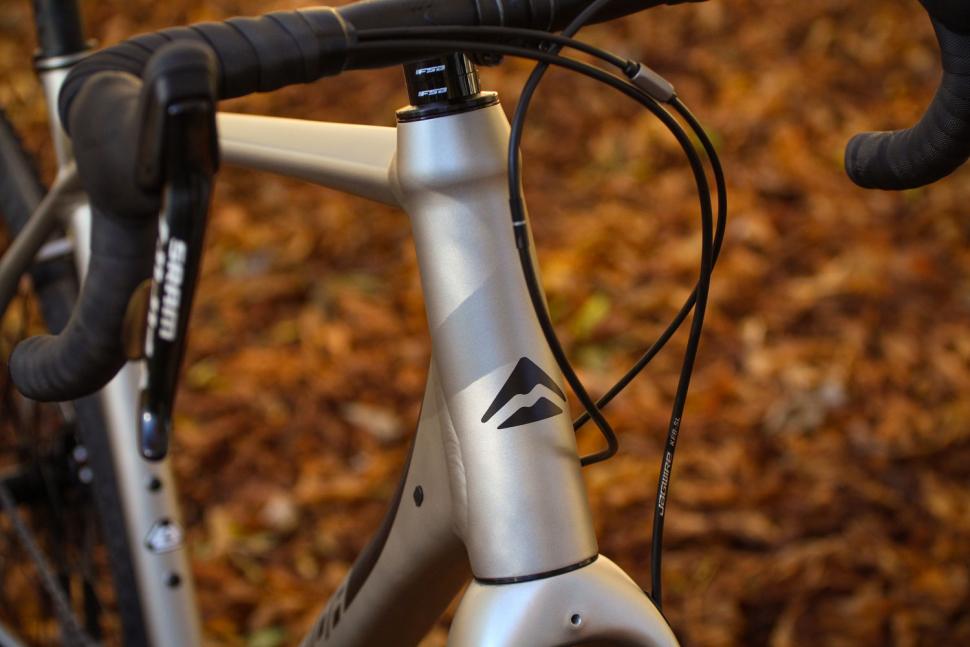


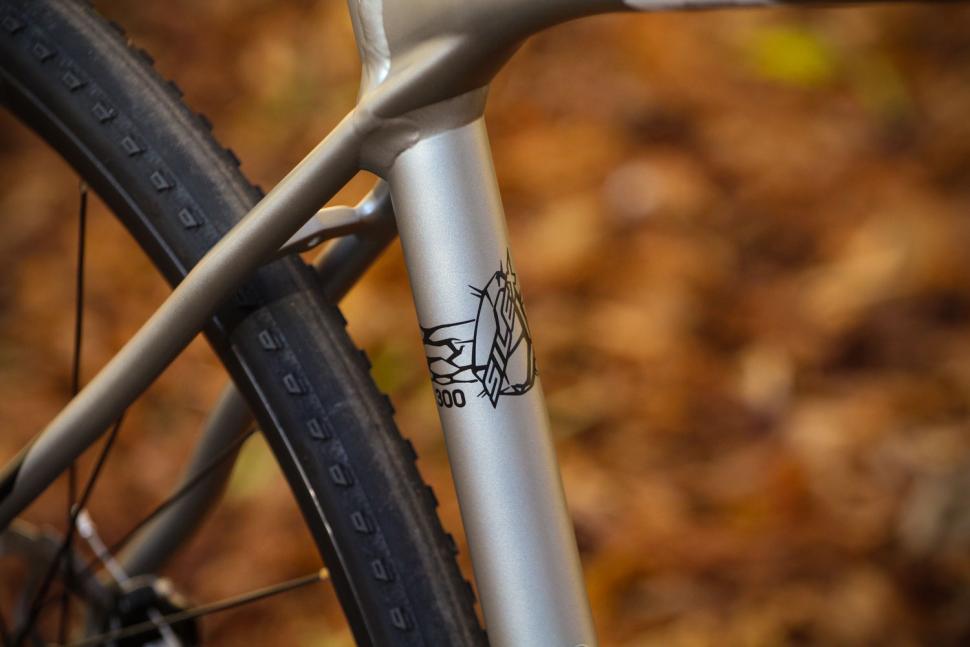



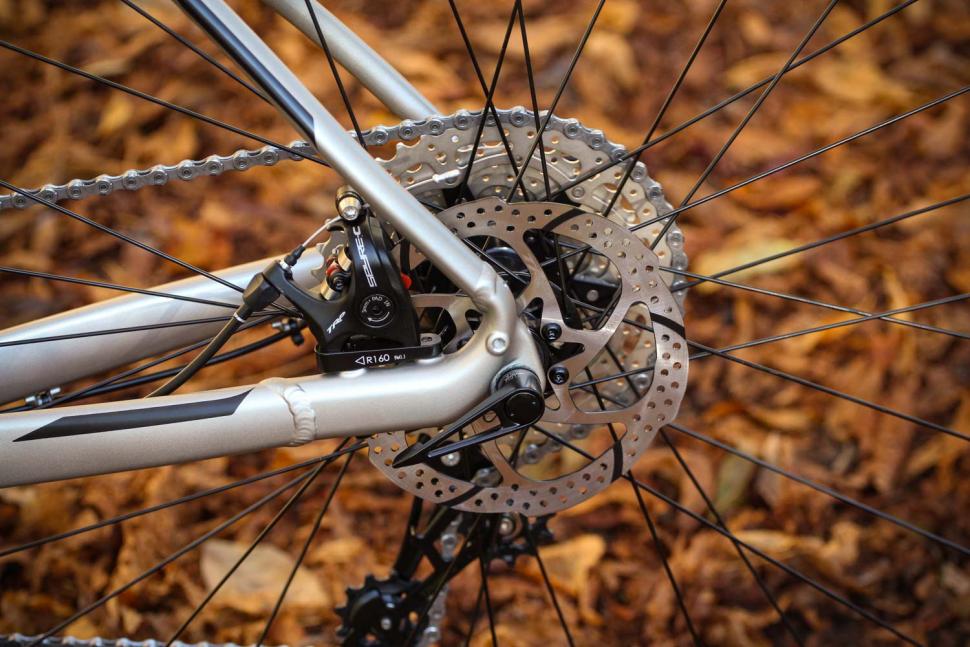
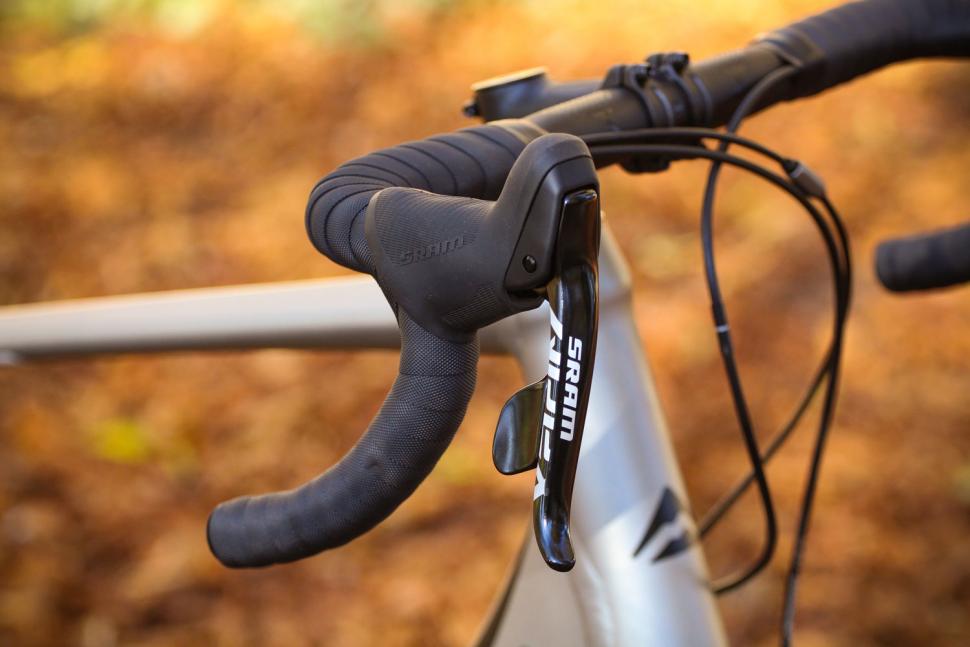
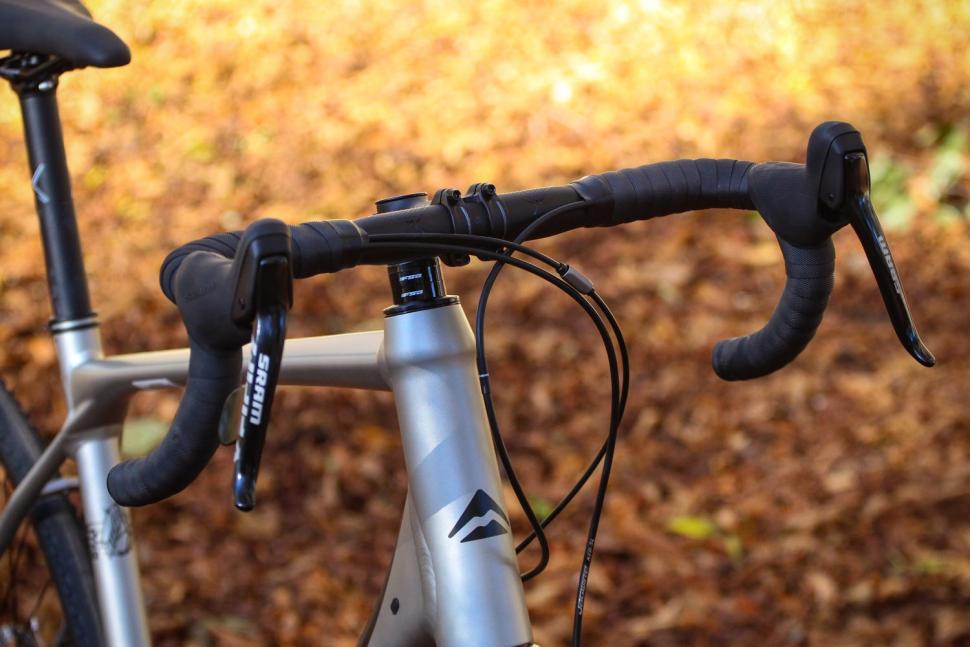


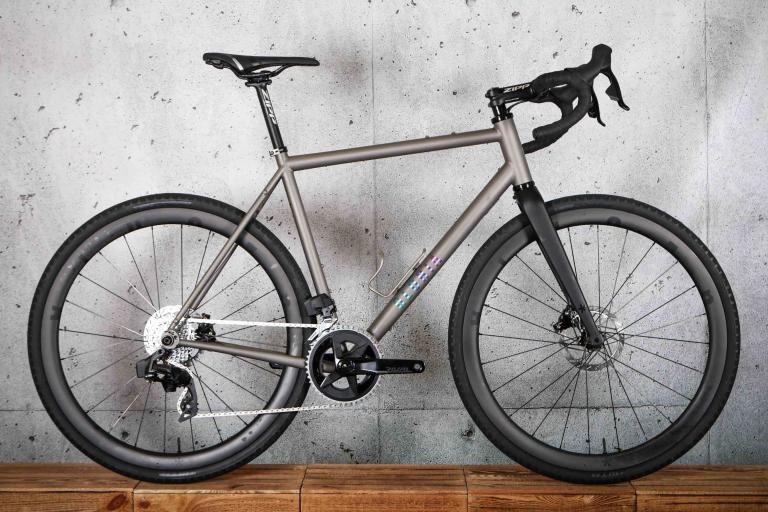
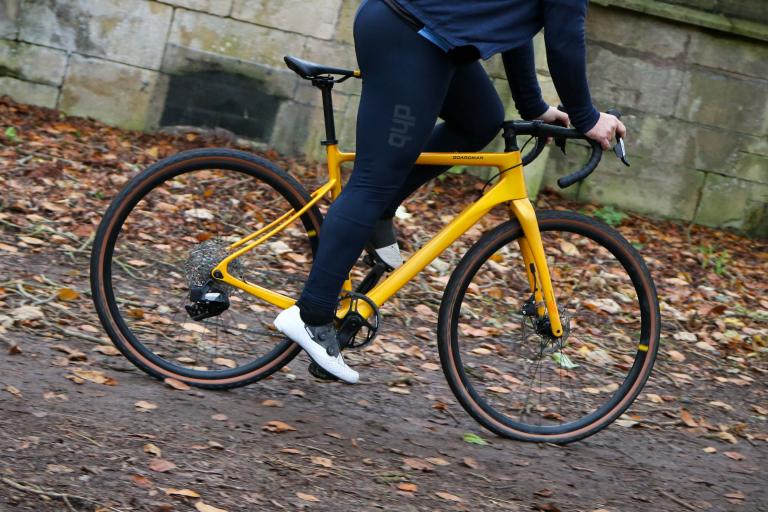

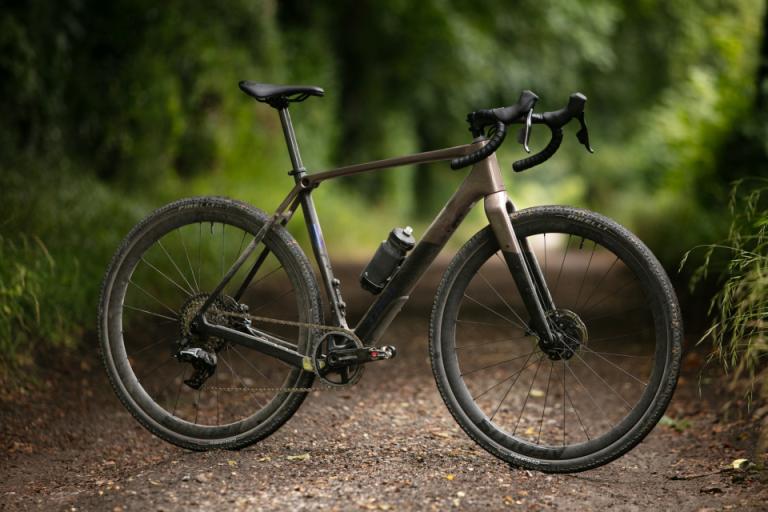
Add new comment
11 comments
It's amazing - the racing bicycle (including all the subcategories) - can vary in aesthetics so much, from the beauty of an Enigma titanium frame to this..
Sorry to comment again, but here is some evidance re the tyres.
Despite what merida UK site claims on this link (which was the original marketing text when the Merida launched the 2018 Silex).
https://www5.merida-bikes.com/en_gb/silex-2018-2070.html
If you look at the following much more up to page and scroll down to the highlights section, if you expand the 'Go Big' you'll find the tyre options for the Alu frame. Note they are rather different.
https://www.merida-bikes.com/en/bike/detail-139-139/silex-300
Upshot.... on the alu models, 650b is basically pointless given that the max width is the officially the same at 42mm (and unofficially, only marginally different at 47mm and 44mm) on both 650 and 700c wheels.
Looks like a good great bike, but I think the reviewer should stop trying to be 'down with the kids,' as fanging has far too many meanings...
Joules, your bike is 2018 yeah? so different to this one? Without seeing it side by side I can't comment on whether the stays have been re-engineered, but we know that the seatpost port is gone, so maybe other things changed betwen MY18 and MY19, including available clearance.
I've changed the tyre figure to 44mm - better safe than sorry, and I'd hate to have someone read this and end up with a tyre that didn't fit. There's so much variability in tyres and possible second-pair wheels, it's gonna happen.
Your other points - man, you know more about this than the average bear. Enjoy!
My bike is a 2018, which is why I put in various caviats/questions asking if things had indeed changed. Always difficult judging from photos, but overall frame shape (inc. the seatstays) appear to be identical, or at least exceedling similar to the 2018 versions.
I am also really on top of the bike due to the issues I've had and the clear errors in the marketings and/or design (someone didn't tell the designers that the alu bikes had to have the same tyre clearance as the carbon, or someone didn't tell the marketing guys that the alu frames were to be slimmer). After discovering these issues all the other, admittedly smaller and surmountable problems just wound me up even more.
Apologies if I came across a little harsh re your review, but many reviews of the Silex have been flawed as few have properly explored the versility that the bike is marketed as having - i.e.. swapping out wheels sizes and tyres to the limits Merida claim, fitting bags etc. as Merida have indicated in text or photos, and really thrashing the bike off road. To be fair, you seem to have done the latter from your review text, and fair enough if you found the bars etc OK for this - I know full well that cockpit set-up can be very personal (e.g. I refuse to go to the on trend 760mm+ bars on my MTB as it just feels wrong and doesn't suit my riding style).
I completely agree re the Maxxis tyres, which are basically just fat road tyres, and strike me as a spec choice based on cost and taken by someone not part of the design team (the original marketing shots show a bike fitted with a completely different and much bigger set of Maxxis tyres, which would have been a much better option function wise), and I also agree with your comments re the excellent handling etc.
Overall the bike works really well - it's only when you start pushing the general versility that the bike is marketed as having that you start to quickly find a number of annoying flaws. Flaws that show up a lack of joined up thinking and/or lack of attention to detail, although to be fair those two things often afflict many cycle brands.
I sense Joules1975 is in the same boat as me - bought a bike (partly) based on tyre clearances which didn't exist in reality.
A) Just managing to squeeze the tyre in between the stays isn't the same as actual useable clearance, and I've had the scuffed sidewalls/worn paintwork to prove it...
B) A 28mm gap is not the same as clearance for 28mm tyres, shouldn't be up to the consumers to realise that a manufacturer's stated 'clearance for 28mm tyres' actually means 'clearance for the stock 25mm tyres, unless you fit guards, in which case good luck'
Tyre clearances are the new 'manufacturer's stated weights' I think!
I realise that we're only 6 days in but I think we've found our winner for ugliest bike of 2019.
Form following function I guess …
Ugly as hell and no reason for a press fit in an alloy frame. I just couldn’t buy it because it’d annoy me just looking at it.
700x50mm tyres?
Have they tweaked the chainstays and seatstays from the 2018 models, or have you swallowed the rather confused marketing around this bike without actually trying to fit different tyre sizes?
The Merida UK site is still claiming that the all models (alu and carbon) can take 700x44 or 650x2.1 (with the fork, andindeed the carbon frame, this is true, but with the alu frame the former is just about accurate while the latter is complete tosh). Indeed the international Merida site changed the info to something like 700x38 or 650x42 (can't find the page now to check, but I've a screenshot somewhere).
You also failed to mention
- the seat tube bottle bosses are stupidly high, leaving a huge gap below and restricting frame bag options above (this will have been to avoid fouling the front mech clamp on the 2x bikes, but a couple of washers behind the cage sorts that issue).
- the bars are far too narrow to really get the most from the bike when things go off-tarmac - fine for on road stuff but if you buy this bike it's for it's off-road capabilities, which are seriously handicapped with the standard bar.
- the gearing is way too high for 'normal' people when off-road and/or with luggage. I swapped out the ring on mine for a 38 which is much more usable - this is a bike for sitting up and enjoying the ride, not putting your head down and powering along.
But to Merida's credit, once with 43c or similar tyres and some more sensibly broad and flared bars, the bike rides really very well indeed.
Plus, you claim it doesn't having dropper post routing - not true, unless the little tab behind the seat tube has been removed for 2019. It doesn't have internal dropper routing, but you can route the cable through the down tube (if running 1x, as it's the dropper cable or front mech cable, not both), and then the tab I mention acts as either a front mech outer cable stop or somewhere to cable tie the outer cable of a dropper post. I have KS Lev post fitted to mine and it's great. Plus having the routing outside makes it simpler to remove should I want to switch it out for a fixed post to attached a large bag to. I've also switched to Shimano shifters etc but still with 1x, meaning the redundant left shifter can be used to actuate the dropper.
Hi Joules1975, thanks for taking the time to comment, it's all good
There's marketing, marketing, and real measurements. Measuring the stays where the widest part of a 50mm tyre would sit, there's 54mm of width. I've run many bikes with 2mm of clearance, with no issues. Merida actually say Silexes are good for 2.2" / 56mm 650b - measuring where that would sit, there's 58.4mm clearance - ie sod-all with a 56mm tyre in there. I'm not sure why they are so conservative with 700c and apparently over-optimistic with 650b.
What this bike clearly isn't, is a full-on bikepacking machine optimised to carry masses in the frame - it's a dropped top tube. No doubt Merida have placed the seat tube cage to suit the vast majority of purchasers, the vast majority of the time - when there's no bag to clear. The answer is something like the cheap and lightweight Topeak Alt-Position mounts.
Having managed a number of PB's and had a hell of a lot of fun over very rough, off-the-back-of-the-seat stuff over the last two months, I beg to strenuously differ with the term 'seriously handicapped'. I did note in the review that the lack of flare was a thing, but again: this isn't trying to be a, er, Bombtrack Hook EXT
Horses for courses there. I'd count myself at 75kg/6' and typically coming mid-field in local cyclocross races as pretty 'normal'. A fair chunk of any Sunday club run who actually pay attention to 'training' could likely take me to the cleaners. Yes, if you were hauling a tent and kit over the middle of Wales or Scotland, you'd pop a £20 34T on. Hardly a chore, is it?
Indeed it is true - there is no seat tube to put a cable through. If your fettling bent is towards being happy removing a dropper in order to fit a solid post to hang a seatbag off, you clearly have the chops to handle any of the above foibles.
Sorry, but that's incorrect. I know because I bought a silex partly because the marketing said that they would run 650bx2.1, however, on trying it ...don't work. The reasons are the seat and chainstays have a slight s shape due to bends in and/or flattening of the tube shapes, witht he result being that the alu frames have approx the same 54mm of clearance all along the the area where 700c and 650b tyres are likely to have their widest point. Last time I checked, 2.1 tyres are approx equivilent to 54c.
While you say that you have run bikes regularly with 2mm of clearance, its obvious you didn't try it on the Silex. Again, I have. When I found that the 650bx2.1 would not work (they measured at 53.4mm, thus rubbing on both sides due to tyre wobble etc)), I tried some 650bx2.0 tyres (measuring at 49.8mm) and these seemed to work, until I cornered hard, at which point the flex in the frame resulted in the tyres rubbing on the seat stays.
It is due to the frame flex that I would not go wider that 43/44mm tyre width.
Re the marketing, as presiouls stated, the international Merida site changed the details, with significantly reduced tyres sizes for the alu versions. If I get the chance I'll dig out the screenshot.
Except that they've put mounts all over the frame and fork, and all the original marketing shots were of a guy on or standing next to a Silex with frame, saddle and fork mounted bags attached (interestingly, without the second bottle cage).
I investigated the Topeak Alt-position or similar, but these space out the cage by so much that the two bottles/cages then foul each other. My solution was to take an Elite Canibal cage and drill a second whole near the top, and then file a 5mm washer so that it had an angle on one side so that I could bolt case without bending it.
In that case why the MTB inspired 'long and slack' geometry, ability to fit dropper posts (specific response on droppers below), and in the case of the carbon bikes, ability to run 650bx2.1 tyres.
No, as I've shown changing mine, but it's a question of who the bike is aimed at. If it's at gravel racers, the head tube is arguably too high. That high head tube lends itself to a more relaxed riding style, and thus the bike will likely be bought by someone looking for a more relaxed all-rounder i.e someone like me for which it's an additional bike or someone looking for a less racey bike in the first place.
The lower gear would suit the bike more given the likely owners, and in the case of the latter, the wider bar would help inspire more confidence too.
Forest roads tend to be pretty steep and often 'tacky' (at least round here), and so I quickly ran out of gears with the 44t ring. The 38 allows me to get up almost anything where an MTB wouldn't become a more sensible option, and still pedal at 25 or so MPH (if I wanted to be faster, I'd stick to tarmac on my road bike).
Indeed it is true - there is no seat tube to put a cable through. If your fettling bent is towards being happy removing a dropper in order to fit a solid post to hang a seatbag off, you clearly have the chops to handle any of the above foibles.
[/quote]
You seem to have ignoring the fact that there are external cable posts and/or not understanding how they route on the Silex. To be fair, on the photos on the review, the routing tab behind the seat tube appears to have been removed on the 2019 models, which would mean cable tie around the seat tube to route the cable and would explain your comments.
I agree though that not being able to route for a 'stealth' post is an omission, and an even greater one if that seat post tab I mention has indeed gone.
I'll try to get some photos of mine to better illustrate how the dropper routing works on a 2018 model.